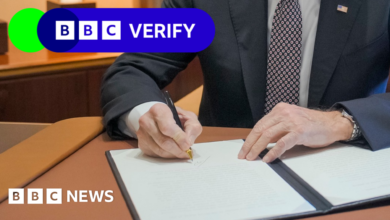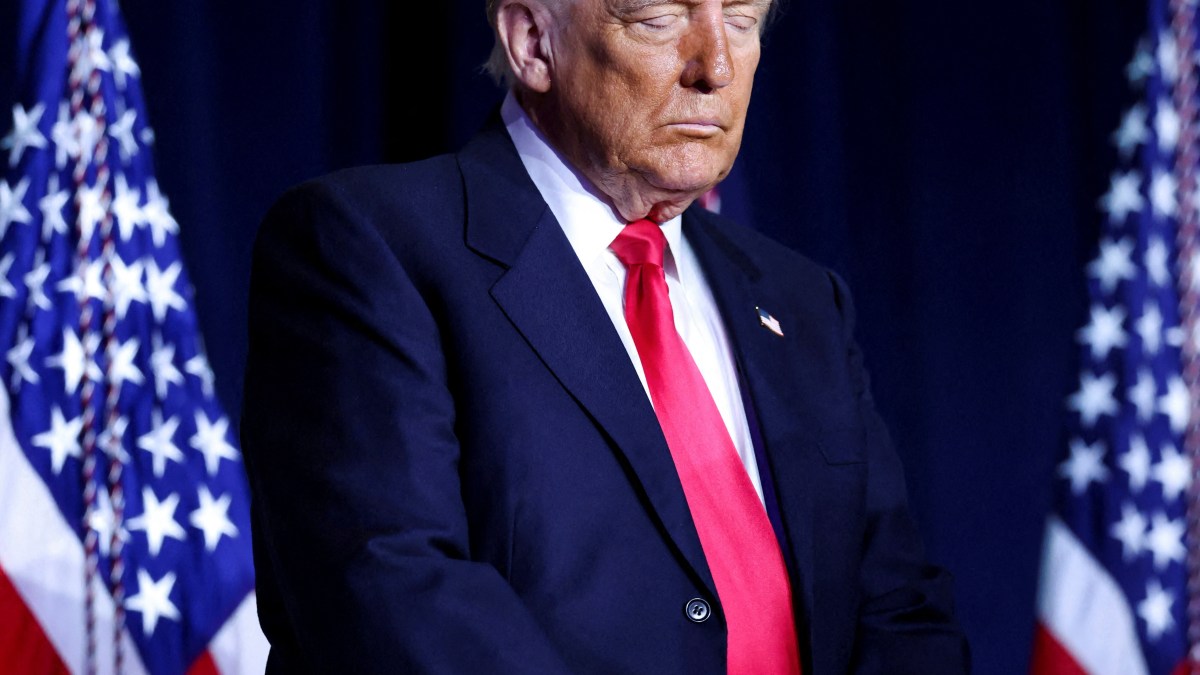‘Highest price for war’: Russia lost 430,000 soldiers in 2024, says Ukraine | Russia-Ukraine war News

Russia’s gradual advance into parts of Ukraine’s eastern Donetsk region succeeded in wresting 4,168 square kilometers (1,609 square miles) of abandoned fields and villages in 2024 – equivalent to 0.69% of the country’s area.
That was the assessment of the Institute for the Study of War, a Washington-based think tank, based on satellite images and geotagged video footage.
The Institute for the Study of War said: “Russian forces captured four medium-sized settlements – Avdiivka, Seledov, Vohldar and Kurakhov – in all of 2024, the largest of which had a pre-war population of just over 31,000 people.”

Russian forces spent four months taking Avdiivka, and two months each for Selydove and Kurakhove.
“Seizing these settlements has not allowed Russian forces to threaten any notable Ukrainian defensive nodes,” said the ISW, adding that Moscow’s troops failed to conduct the kind of rapid, mechanised manoeuvre necessary to convert these “tactical gains into deep penetrations of Ukraine’s rear”.
At this rate, Russia would need two more years to complete its conquest of Donetsk alone, the ISW assessed – something Russian President Vladimir Putin had ordered his commanders to do by October 1.

Russia’s sacrifices to achieve these advances have been immense, as Ukrainian forces used their defender’s advantage to inflict high casualties, especially in urban settings where they fought building-to-building, street-to-street.
Ukrainian Commander-in-Chief Oleksandr Syrskii said on Monday that Russian forces had suffered an estimated 427,000 wounded and killed in 2024. A few days later, Ukraine’s Ministry of Defence put Russia’s losses last year at 430,790 soldiers – the equivalent of 36 Russian motorised rifle divisions – outnumbering its losses in 2022 and 2023 combined.
These losses amounted to an average of 1,180 a day, but casualty figures rose substantially towards the end of the year, as Russian forces increased their assaults in an apparent effort to influence the US election.
The highest monthly losses, the Defence Ministry said, came in November and December – 45,720 and 48,670 respectively – as Russia intensified its attacks in Donetsk.
“This year, the Russians paid the highest price for the war against Ukraine, as our army and all of our defence and security forces of Ukraine destroyed more enemy equipment and manpower than in any of the previous years of the war,” Syrksyi told his forces in an address on December 31.

‘1,700 killed and wounded every day’
Russia did manage to increase its daily land grab from 14 sq km (5.4 square miles) in October to 28 sq km in November but fell back to 18 sq km (11 square miles) a day in December. Apparently, its losses did not fall commensurately.
“Over the past week, the invaders have been losing about 1,700 people killed and wounded every day,” Syrksyi said on Monday.
December also produced two possible Russian casualty records.
On December 29, Ukraine’s general staff said Russian forces lost 2,010 people. They suffered a possible all-time record of 2,200 daily casualties in a total of 191 combat clashes on December 19.

Ukraine also estimated it had taken out 3,689 Russian tanks, thousands of armoured combat vehicles, and more than 13,000 artillery pieces. Ukraine’s navy said it sank five ships and 458 smaller craft.
Russia recruited North Korean fighters in an effort to relieve pressure on its manpower, but Ukrainian President Volodymyr Zelenskyy said a quarter of them had been wiped out.
“According to preliminary data, the number of killed and wounded North Korean soldiers in the Kursk region already exceeds 3,000 people,” Zelenskyy said in his evening address on December 23.

He recently claimed that Russia is killing North Koreans for the risk of them falling into the hands of Ukrainian forces.
“Everything is arranged in such a way that it is impossible for us to capture Koreans as prisoners, their own people execute them, and there are such cases,” Zelensky said in an evening speech on December 27.
Ukrainian military intelligence, GUR, said more North Koreans were being brought to Kursk to compensate for losses.

Russia looks to Central Asia to heal its economy
Putin appears to have prioritized the workforce in the war over workers for the economy.
He signed a decree on Monday requiring all illegal immigrants to leave Russia by the end of April, but joining the army allows them to circumvent the requirements of regular legal status.
Ukraine’s Foreign Intelligence Service estimates that Russia suffered a labor shortage of 1.5 million people last year, with the available workforce falling by 1 million people. However, Putin’s decree would pull foreign workers from the economy and put them on the front lines.
Putin acknowledged a shortage of “hundreds of thousands” at a year-end news conference on December 19, but did not link the shortage to the war. Instead, he proposed bringing in more migrant workers from Central Asian countries.
He emphasized the need to “develop a network of Russian schools there, study the Russian language, introduce people who will come to work here” and spoke of the need to increase labor productivity through higher technologies.
Both Ukraine and Russia have turned to a war economy, with Russia funded by income from fossil fuels and Ukraine funded by aid from its Western allies.
Both have sought to become as independent of weapons as possible.
In his New Year’s speech, Zelensky said that 30 percent of the weapons used by Ukraine last year were homemade.
He said: “I felt ashamed as a citizen that since the 1990s, the state has not noticed people like ours.” “And I am proud…that Ukraine is once again building its own missiles. For the first time, it produces more than one million drones in one year.
Ukraine has used air and sea drones of its own design to strike deep into Russia and across the Black Sea.
Ukrainian military intelligence said on Tuesday that it used a SeaDragon missile launched from a Magura V maritime drone to shoot down a Russian Mi8 helicopter.
“Today, for the first time, a helicopter was shot down and fell into the water. “The fact of destroying an air target over the Black Sea has been recorded,” Kirill Budanov, head of Ukrainian intelligence, said in a conference call.
GUR released footage of the raid. He added that the Russian helicopters that were struck in this war were previously able to reach the airport.
Russia has also invested in drones, although it is hampered by Western sanctions on imports of sensitive technology.
Ukrainian intelligence sources told CNN that its drone factory in Alabuga, 1,000 kilometers (620 miles) east of Moscow, produced 5,760 drones in the first nine months of last year, double its output in 2023.
The Ukrainian air force said that in 2024 it faced a much greater missile and drone threat against critical infrastructure than in 2023, partly because Russia was also using Shahed drones that do not carry explosives but confuse air defenses and overwhelm them. On her.
The Air Force said, “The enemy is trying to complicate the air situation as much as possible, increase pressure on our air defenses, and exhaust the defenders of the sky.”
Over the past year, Ukraine said it shot down 11,200 “attack” drones, including 7,800 “Shahed” drones.
The municipality said that Kiev alone faced 200 air attacks last year, including 1,300 drones, more than 200 cruise missiles, and 46 ballistic missiles.
A civilian was killed during New Year’s Eve, after a Russian drone crashed into an apartment building in Kiev, the Ukrainian prosecutor general announced. Another drone caused a fire at the National Bank of Ukraine.
The Ukrainian air force said the drones were part of a massive attack that included 111 Shahed suicide drones, of which it said it shot down 63.
Despite its rising arms production, Ukraine remained heavily dependent on supplies from its allies.
US President Joe Biden on Monday announced $2.5 billion in military aid to Ukraine, half of which could be withdrawn immediately.
Biden said the package represented the remainder of the $60 billion in aid he signed into law for 2024, and included “hundreds of thousands of artillery shells, thousands of missiles, hundreds of armored vehicles” as well as air defense equipment.

https://www.aljazeera.com/wp-content/uploads/2025/01/2025-01-01T073433Z_1771944219_RC2V0CAT88HN_RTRMADP_3_UKRAINE-CRISIS-ATTACK-KYIV-1735900634.jpg?resize=1920%2C1440
2025-01-03 11:15:00





